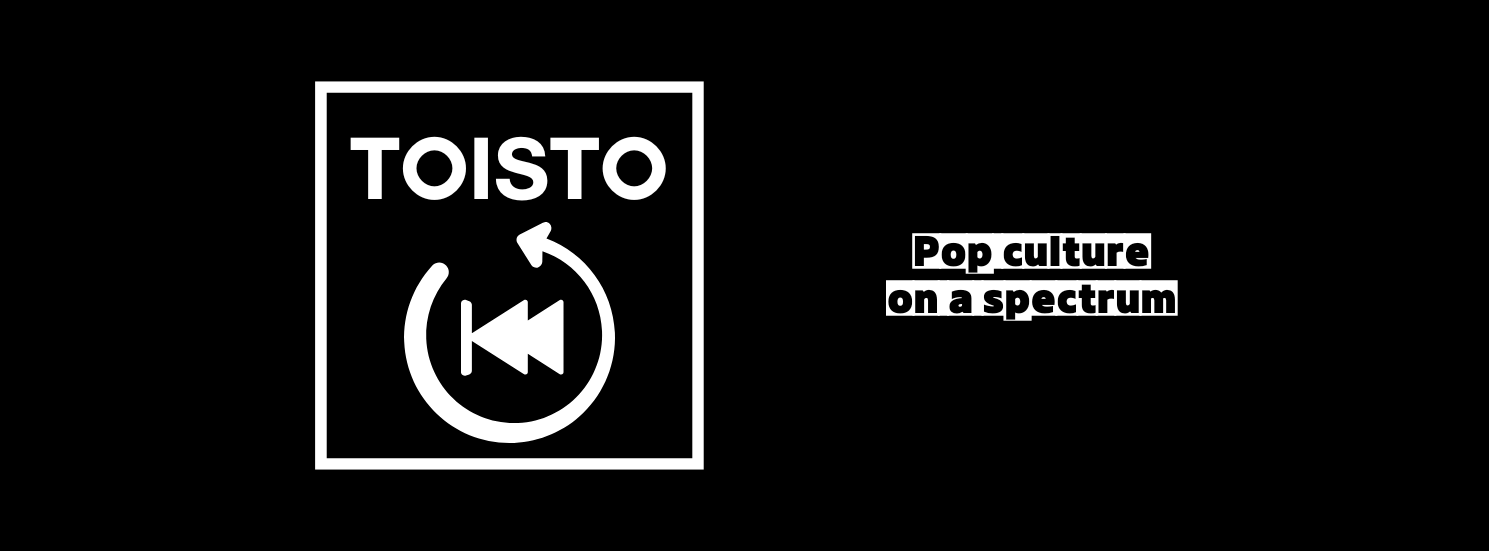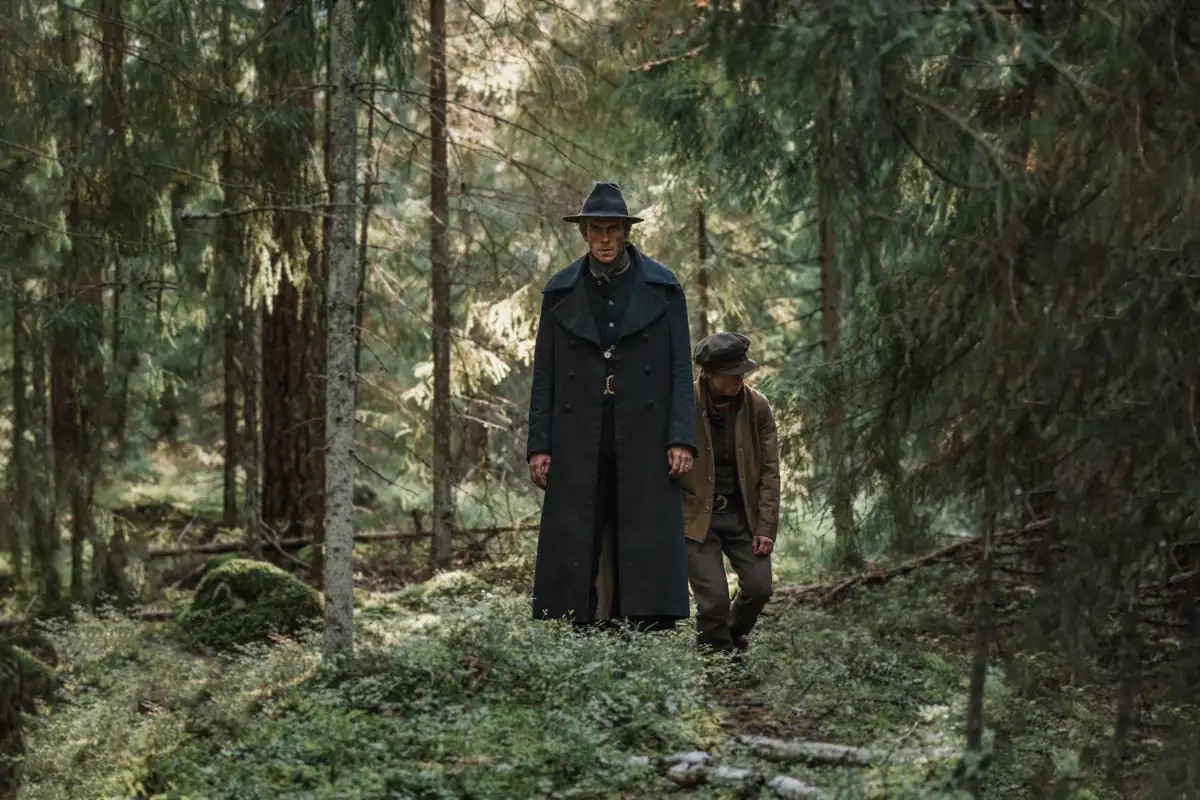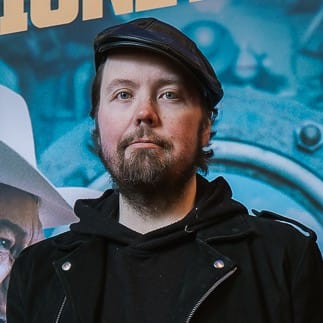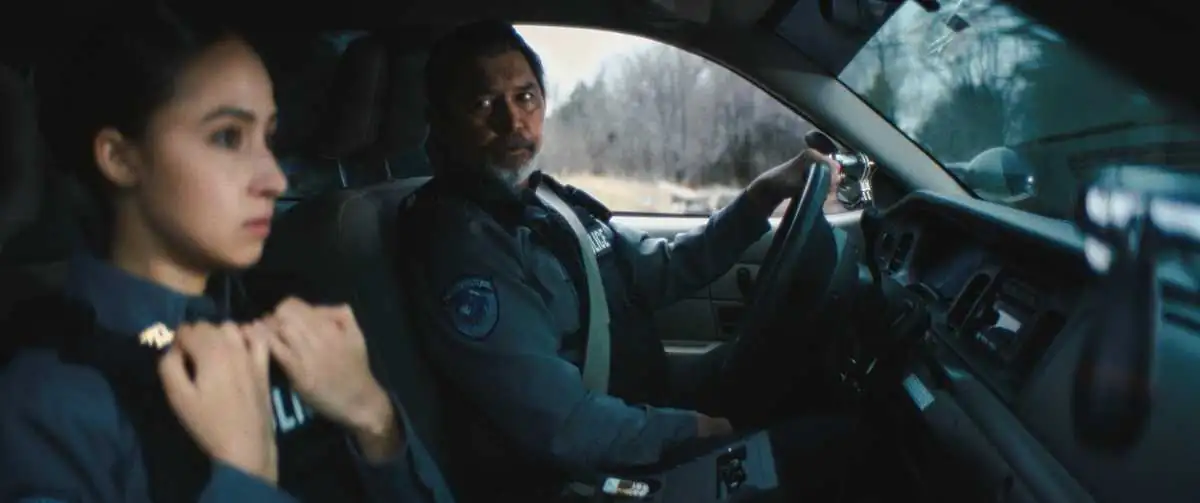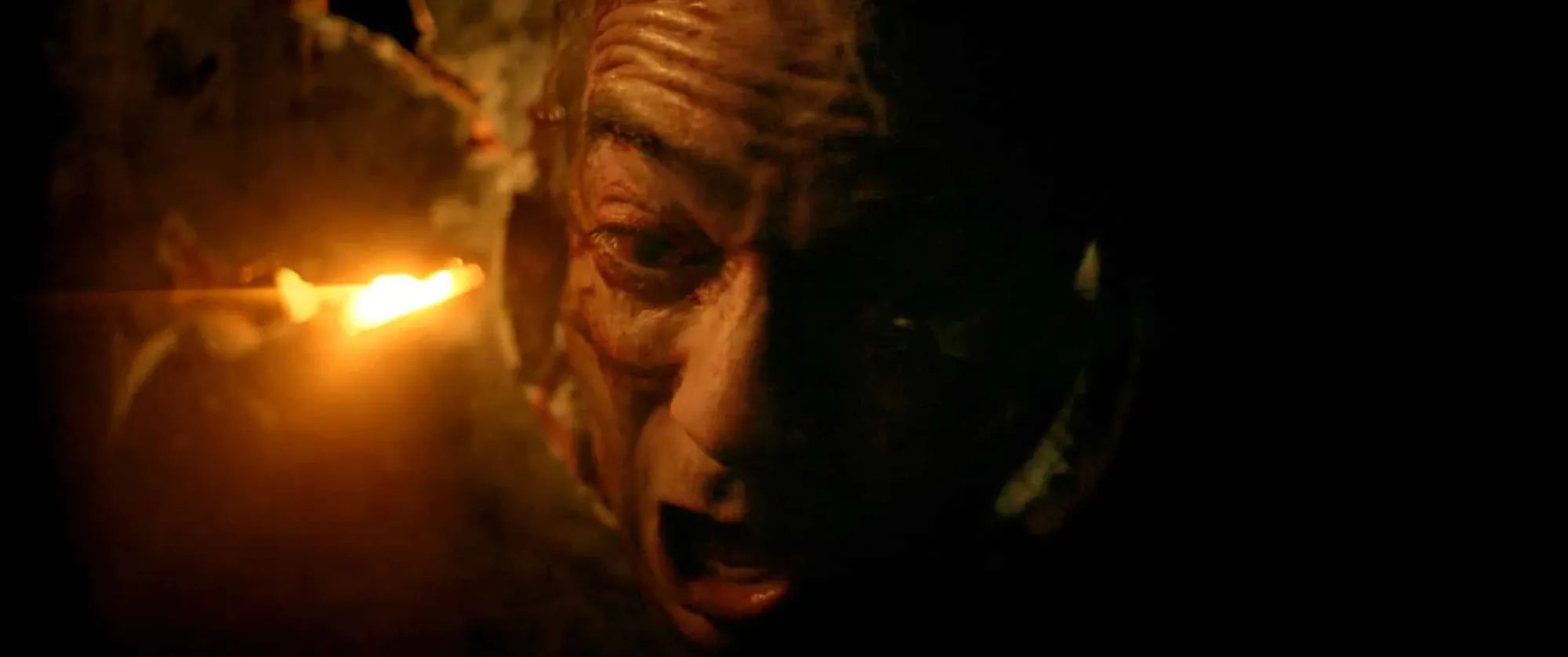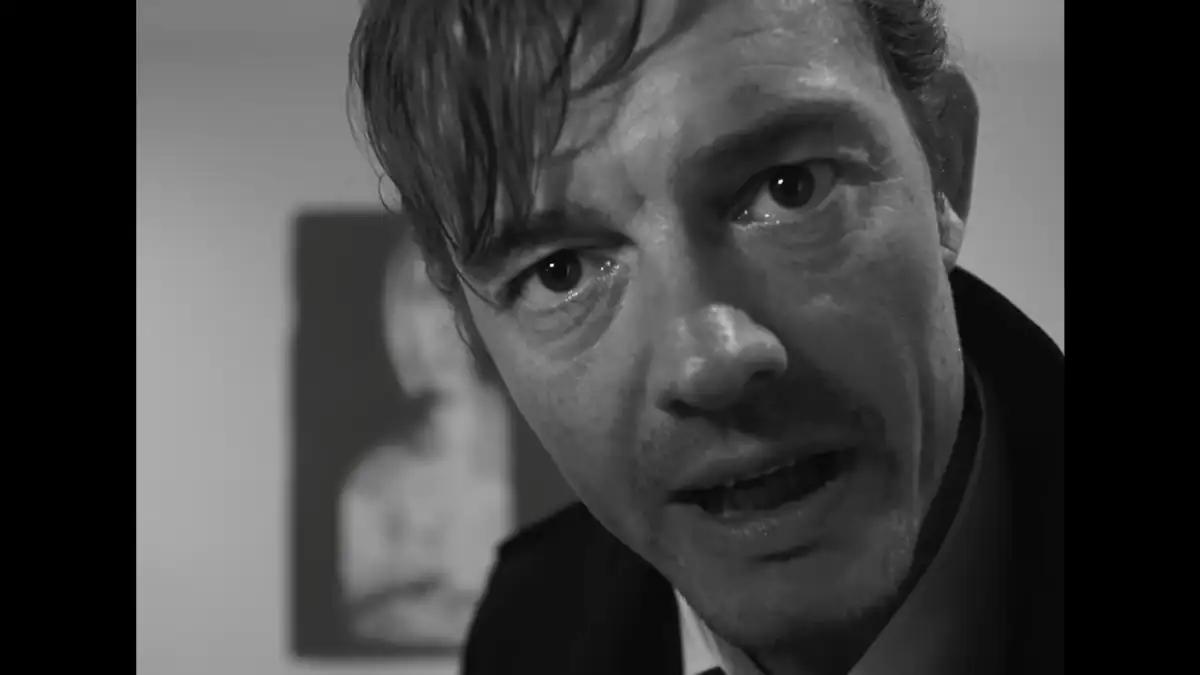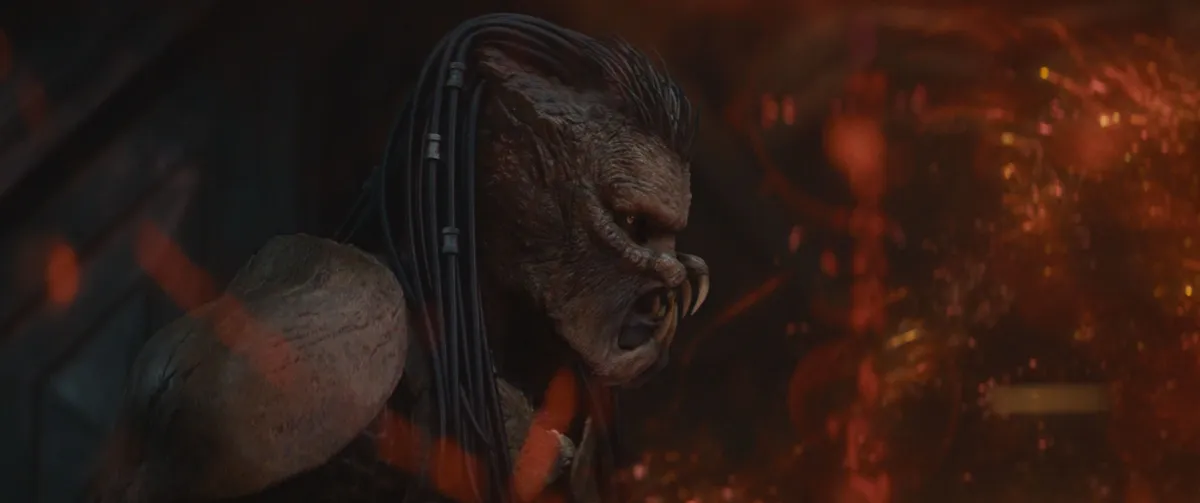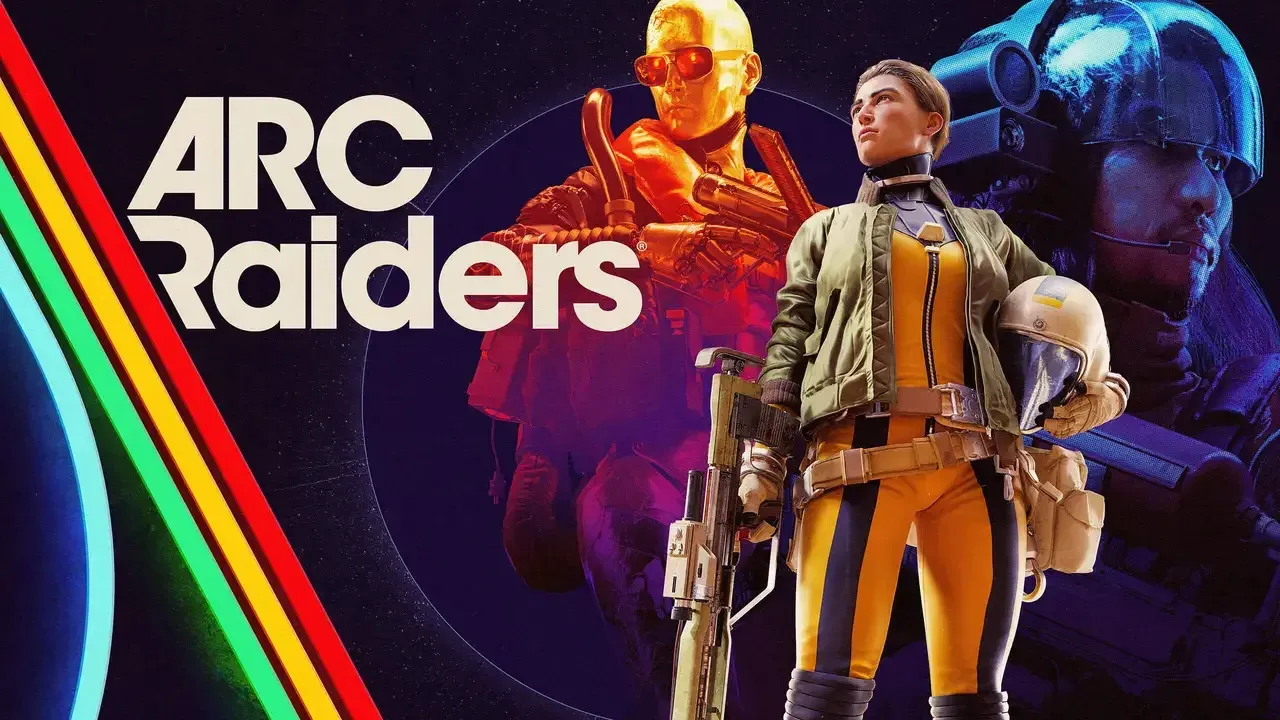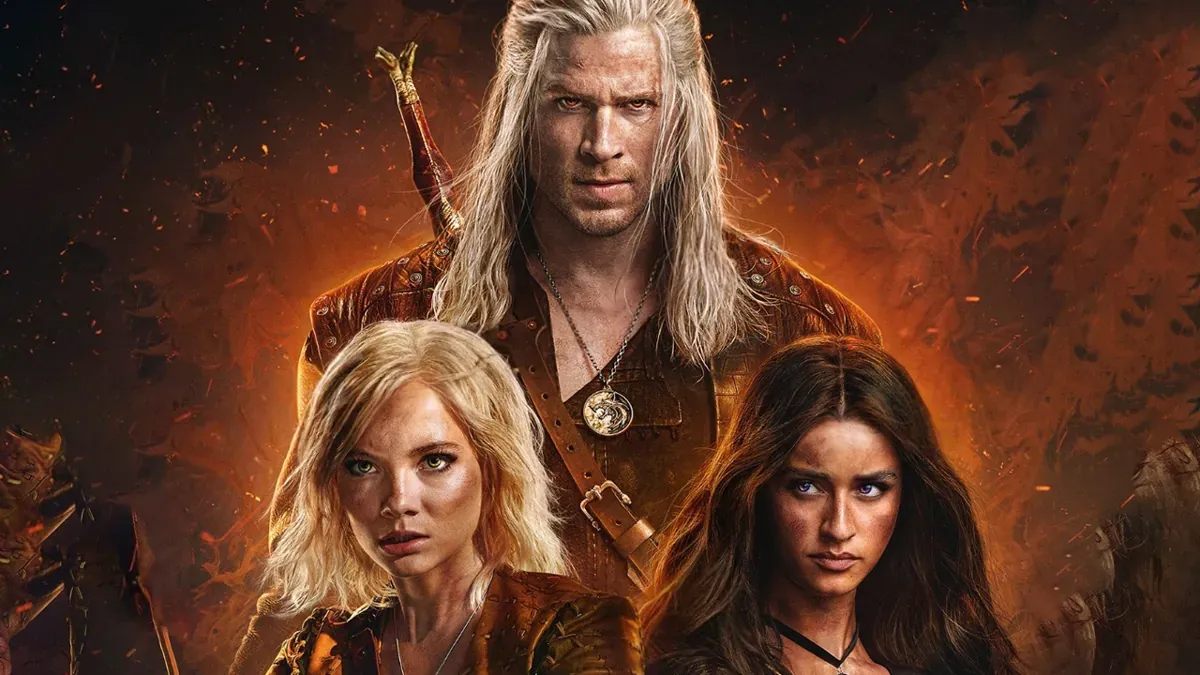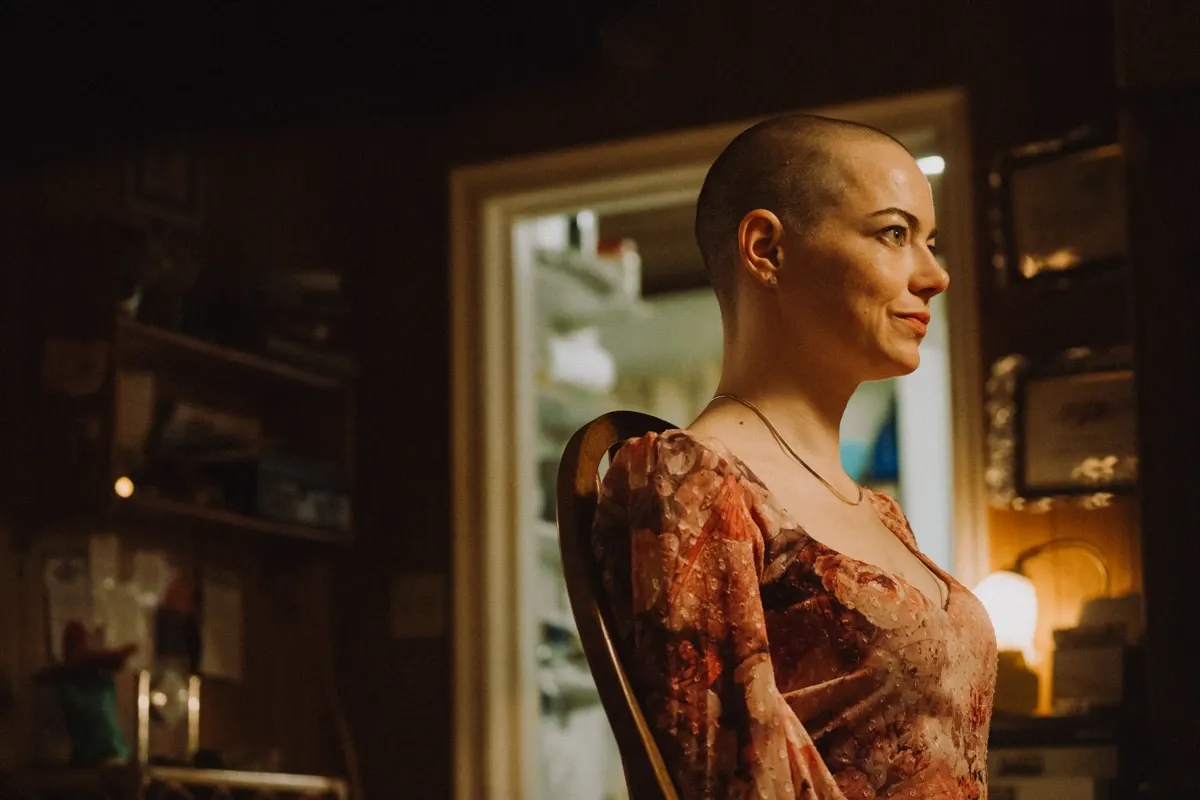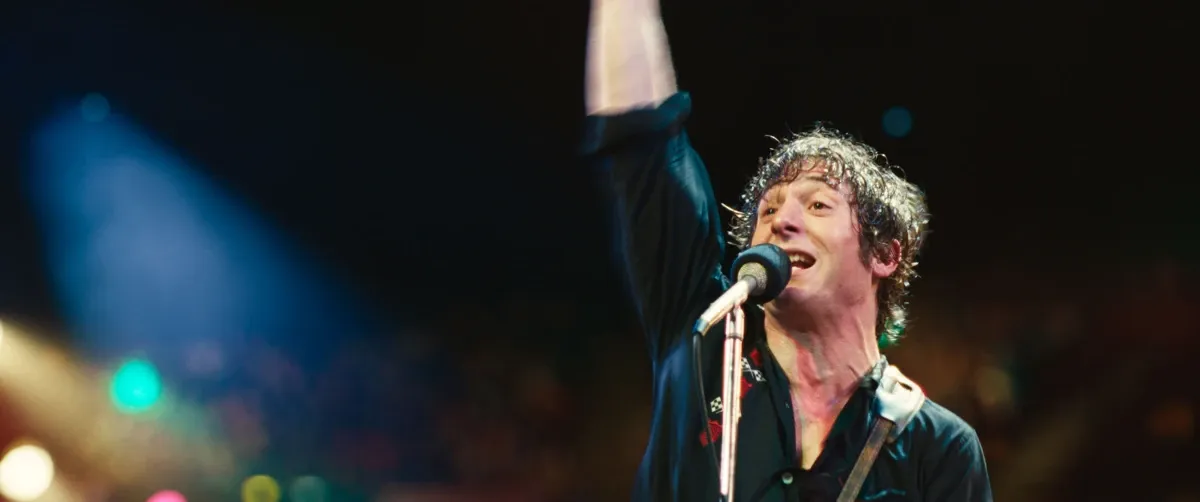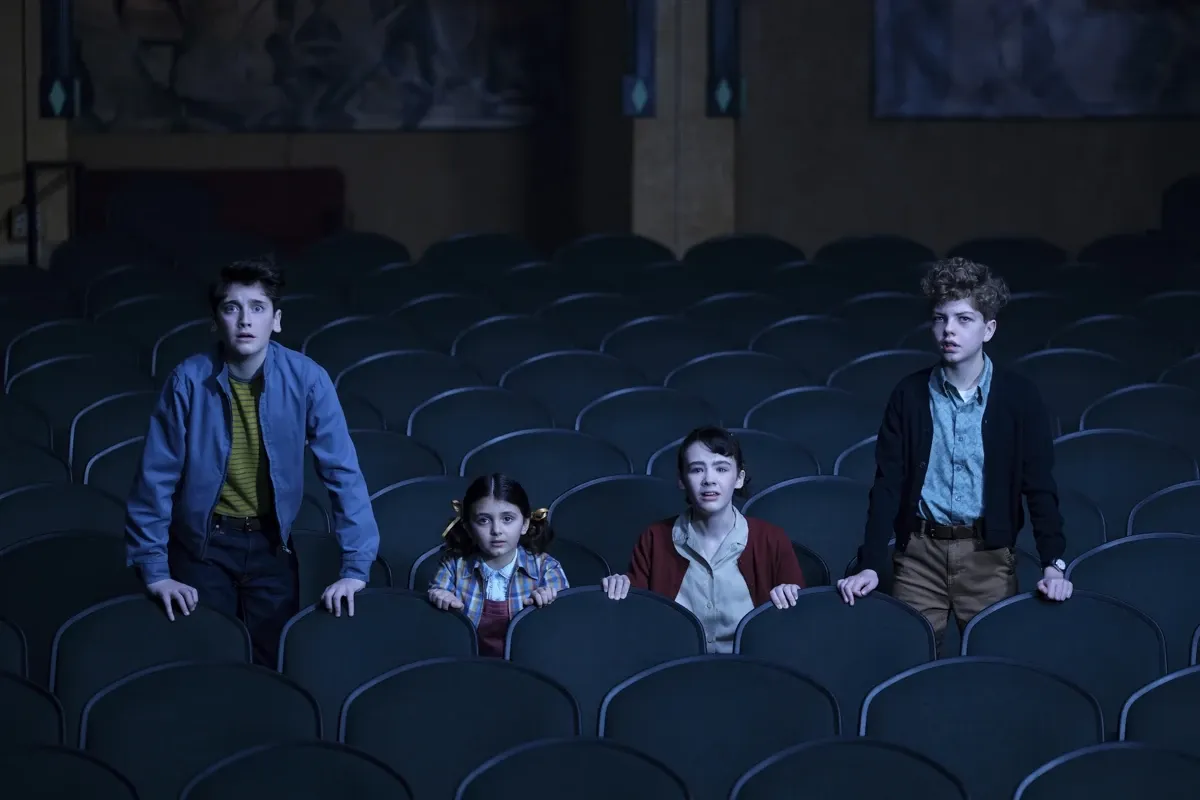A stranger arrives to a distant frontier town where a young woman is murdered, and everyone has a secret. That’s the setup for To Cook a Bear, the new Nordic Noir series out on Disney Plus. It’s also familiar to anyone who has read or viewed anything in the genre before. But the familiarity is part of the point. To Cook a Bear establishes itself as classic material before picking it apart to investigate what makes it so timeless.
“It is historical crime fiction, but I shot it as a Western,” says director Trygve Allister Diesen. “That was my pitch to Disney, just three words: Big, bold, and beautiful.”
Lead actor Gustaf Skarsgård agrees. “It’s heightened reality. It’s strong silhouettes of characters that stems from the costume and makeup design, and the world is very grimy and meaty. That allows for a sort of playfulness with the genres.”
It's crime fiction written by somebody who doesn't write crime. It defies genre to some extent.
It’s press day for To Cook a Bear, and I’m speaking with the cast and director of the series via video link to Sweden. We’re a day out from the show’s release, and everyone is in good spirits, anxious to the anticipated adaptation of Mikael Niemi’s popular novel out to the public.
“Have you read the book?” Diesen asks before excitedly heaping it with praise. “It's a fantastic novel, and I think what makes it interesting is that it's crime fiction written by somebody who doesn't write crime. I think that's why you see there's these layers to it, because it's already there in the material. It defies genre to some extent.”
That richness is especially palpable in The Pastor, the series lead character who arrives to town as a spiritual instigator, as played by Skarsgård. He’s a man of extremities and contradictions, both fiercely devout to his cause, yet blinded by his zealotry and righteousness. Part Sherlock Holmes, part Lope de Aguirre.
“He’s a character who goes from really strong convictions of being right and good and coming here to save an oppressed community to ultimately sacrificing his vanity in order to be a decent person,” Skarsgård explains.
“He doubts the very existential anchorage of his belief. Everything in the series forces him to question it all. He has confront the fact that he’s imposed his beliefs on Jussi, and it leaves him devastated.”
At the heart of that conflict is The Pastor’s relationship with his adopted son, Jussi, played by newcomer Emil Karlsen. In any other situation, a preacher’s child would be afforded luxuries and stature most others aren’t, yet Jussi is ostracized and shunned for his Sami heritage. It’s another element in the hypocrisy of faith To Cook a Bear dissects.
“He’s a Sami orphan who fled from his home, and the Pastor kind of adopts him before the series begins. In his eyes, Jussi is like a son to him, but for the rest of the society it’s not the same,” Karlsen explains.
“At the same time, he’s a young man, he’s human, he wants to build his life and finds what interests him, and when he falls in love with Maria, it distances him from society even further.”
Maria (played by Tyra Wingren) is another alienated youth searching for a way out of her prison-like existence.
Says Wingren: “She’s in a very difficult situation with pressure coming in from all sides. She has to deal with that by suppressing her emotions and sometimes that leads to them exploding instead. She and Jussi are both outsiders, they’re in a low place in societal hierarchy, and, strangely, that makes them have something in common.”
For their parts, Karlsen and Wingren had to learn Meänkieli, a minority language and dialect of Finnish spoken in the northernmost parts of Sweden. Today, less than 100 000 people speak it natively, despite its proximity to Finnish. For the young actors and the director, the dialect proved an exciting challenge.
“It’s such an interesting language with such a beautiful sound,” Karlsen enthuses.
“It was a fun experiment to find that sound in your body and learn how to act in another language,” Wingren continues.
For Diesen, directing the scenes involved multiple languages. “I directed everyone in English and Swedish, and we had script supervisors who understood Meänkieli as well,” he explains.
“But in the end, you read the situations more than you do the dialog. You have to believe what the actors are saying. So, with the language barrier, you become a bit distant, but that distance gives you perspective. So, it was a surprisingly easy thing to do in the end.”
To Cook a Bear is a massive production filmed in over 40 locations across Sweden and Finland, from remote frontier scenery to tourist destinations in Helsinki. It’s yet another paradox that Diesen and his cast used for inspiration.
“I think I’m a bit spoiled actually by the grand landscapes in the north,” Karlsen says. “I’m so glad the production wanted to portray those places, like the Tornio Valley, accurately to the book.”
Says Wingren: “When we were filming up north, we would visit these museums, only they weren’t like how you picture a museum to be, they were old houses, people’s homes, and it gave so much framework to the story.”
She laughs. “Then we’d come to Helsinki to film at Seurasaari, which is right next to the city and full of tourists, and I’d be there in my frontier costume waving at people taking pictures. I felt like I was an exhibit at the zoo!”
I said early on that we needed the vistas, so we shot everything in anamorphic, which is also part of that Western influence. Nature is beautiful, but it’s also ruthless and hard.
“I think that one of the things that really speaks for the production, apart from the great story, is the nature,” says Diesen. “I said early on that we needed the vistas, so we shot everything in anamorphic, which is also part of that Western influence. Nature is beautiful, but it’s also ruthless and hard.”
I can’t help but point out that despite the grandiose scope, the most interesting things in the series happen with the camera fixed on the expressive geography of Skarsgård’s face. He’s on screen in almost every scene and delivers a nuanced and captivating performance that has us confront difficult questions about a protagonist we’re never quite certain on.
“We spoke a lot about these themes with Gustaf,” says Diesen. “He’s also a producer on the show, and while we wanted the world to be larger than life, it was important the characters are played down.”
A major aspect of the series is the division of the haves and the have-nots. Despite the pious facade the villagers put on, society in To Cook a Bear is insular and hostile towards anyone who would break the illusion of a Christian world. When I ask Skarsgård about the heavier themes, he leans forward, happy to dive into the murkier waters.
“This is a time of extreme injustice in Sweden that was brutal to most people and only beneficial for a few,” he says solemnly.
“We see that tendency continue: It’s getting worse and worse for more people, and better for fewer and fewer, every day.”
He considers this for a moment.
“I mean, I don't want to boast too loudly about the ambition of the show, but it's something that reflects the time we're living in, and it could potentially serve as a reminder of what we don't want to go back to. That’s our intent and ambition.”
